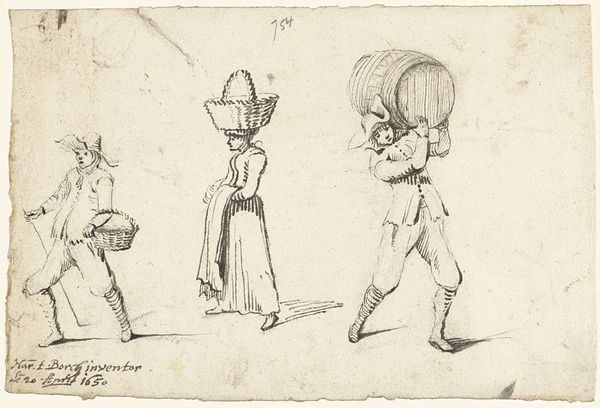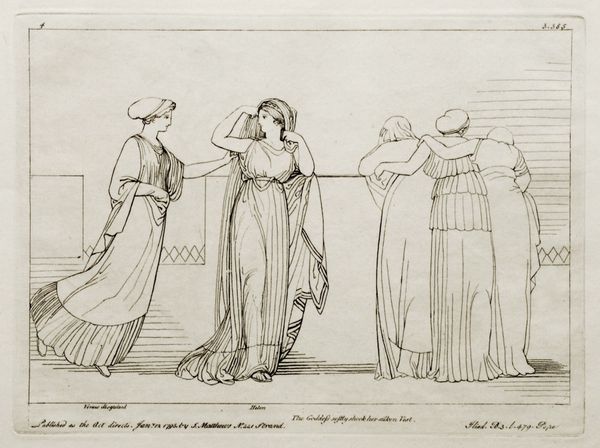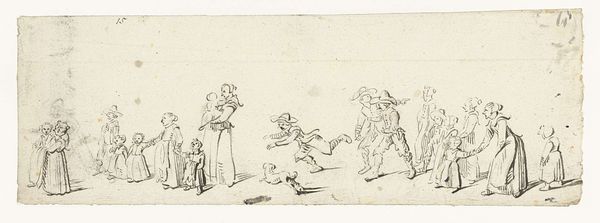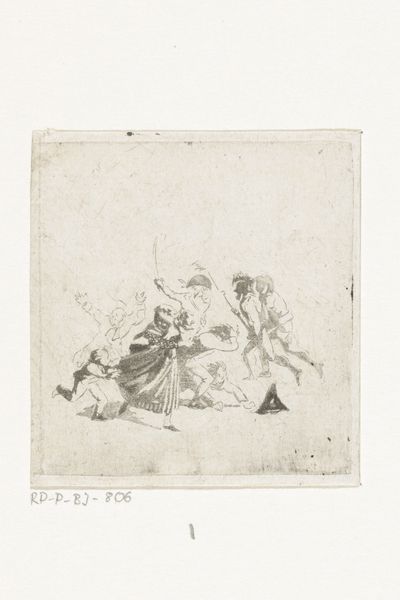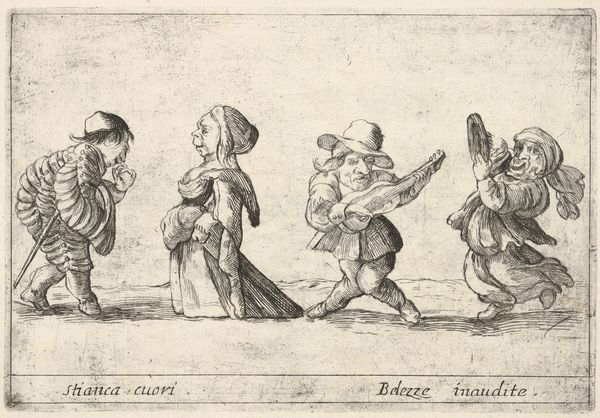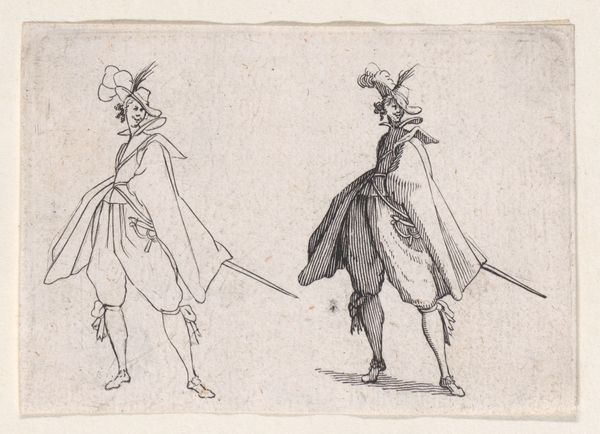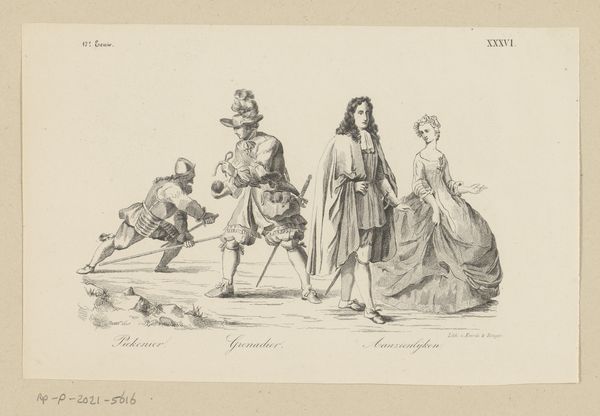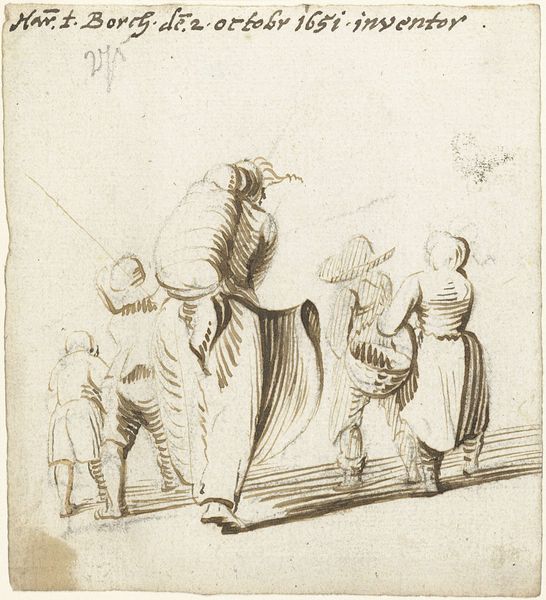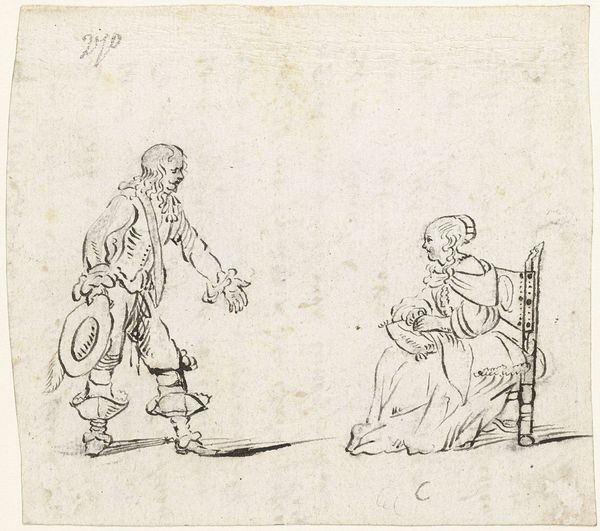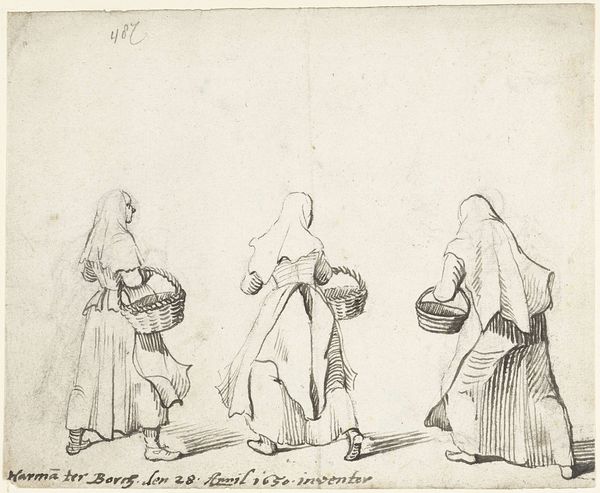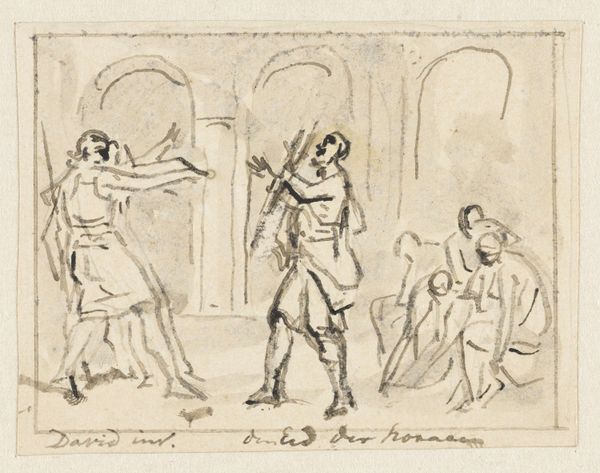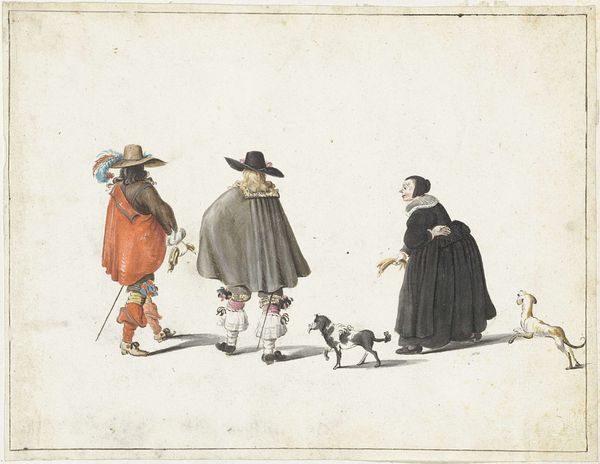
drawing, paper, ink
#
drawing
#
dutch-golden-age
#
pencil sketch
#
figuration
#
paper
#
ink
#
genre-painting
Dimensions: height 175 mm, width 210 mm
Copyright: Rijks Museum: Open Domain
Curator: This is a quick ink drawing by Harmen ter Borch, dating from around 1650 to 1655. It's titled, "Studieblad met drie lopende vrouwen," or "Study Sheet with Three Walking Women," and is currently held at the Rijksmuseum. What strikes you about it? Editor: There’s a captivating immediacy to it. The women appear to be caught mid-stride. They’re so alive, as though sketched in a fleeting moment—you sense motion, burdened movement, the weight of work, even, in the angle of their bodies. Curator: Indeed. Ter Borch was celebrated for his intimate genre scenes, capturing everyday life with a delicate realism. This drawing offers a glimpse into his working method. It's fascinating to see the casual observation of figures in motion. Note the details on their caps. Editor: What is compelling is to wonder at what this fleeting glimpse really says, perhaps a deeper narrative about working women who were an under-recognized labor force that carried Dutch society on their shoulders, yet are rarely acknowledged as individuals. Their identity as women isn’t only about appearances or their place in the family structure, it's also about the world outside it. Curator: Certainly, we could see it through a feminist lens, recognizing the socio-economic contributions of women that were overlooked, and we can contextualize it further by seeing this art in galleries and museums—these institutions, historically dominated by a certain perspective— are places we re-interpret these images. Editor: Absolutely. Considering the underrepresentation of women artists and the subjects that represent women in mainstream art narratives, these artworks open our eyes. Curator: Thinking of Ter Borch's meticulous approach, this loose study served as preparation for larger, more polished works. Perhaps some of these very poses found their way into his more well known paintings of domestic interiors. Editor: Ultimately, Ter Borch's simple yet striking study offers so much—a slice of life but also potential commentary on gender, class and representation during the Dutch Golden Age. Curator: It reminds us how even the simplest sketch can hold layers of meaning, reflecting both artistic skill and the social realities of its time.
Comments
No comments
Be the first to comment and join the conversation on the ultimate creative platform.

